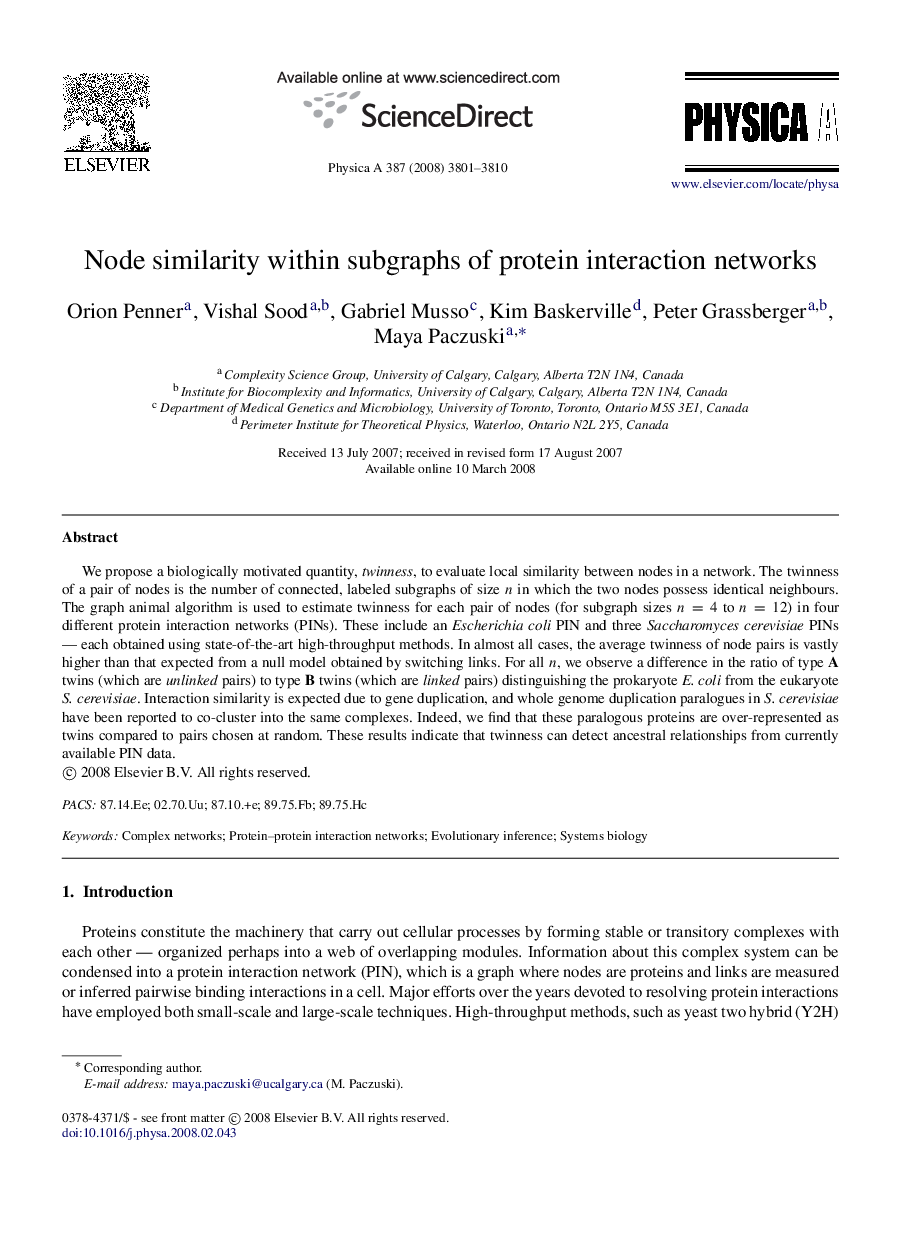| Article ID | Journal | Published Year | Pages | File Type |
|---|---|---|---|---|
| 974974 | Physica A: Statistical Mechanics and its Applications | 2008 | 10 Pages |
We propose a biologically motivated quantity, twinness , to evaluate local similarity between nodes in a network. The twinness of a pair of nodes is the number of connected, labeled subgraphs of size nn in which the two nodes possess identical neighbours. The graph animal algorithm is used to estimate twinness for each pair of nodes (for subgraph sizes n=4n=4 to n=12n=12) in four different protein interaction networks (PINs). These include an Escherichia coli PIN and three Saccharomyces cerevisiae PINs — each obtained using state-of-the-art high-throughput methods. In almost all cases, the average twinness of node pairs is vastly higher than that expected from a null model obtained by switching links. For all nn, we observe a difference in the ratio of type A twins (which are unlinked pairs) to type B twins (which are linked pairs) distinguishing the prokaryote E. coli from the eukaryote S. cerevisiae. Interaction similarity is expected due to gene duplication, and whole genome duplication paralogues in S. cerevisiae have been reported to co-cluster into the same complexes. Indeed, we find that these paralogous proteins are over-represented as twins compared to pairs chosen at random. These results indicate that twinness can detect ancestral relationships from currently available PIN data.
